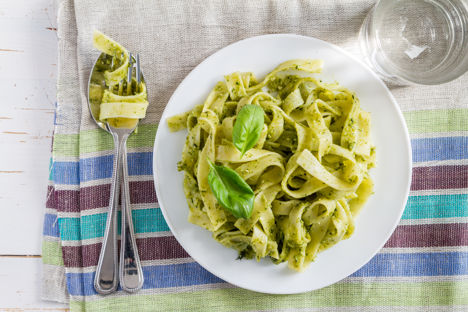
The secrets to cooking perfect pasta
You’ve probably been cooking pasta since childhood, but have you been cooking it perfectly? Take a look at our top tips to find out how to get the most out of this store cupboard staple.
The secrets to cooking perfect pasta
You’ve probably been cooking pasta since childhood, but have you been cooking it perfectly? Take a look at our top tips to find out how to get the most out of this store cupboard staple.
Pasta is one of the first things most of us cook. Even those that don’t enjoy cooking will know how to prepare it – boil water, add pasta, drain, eat. But all sorts of crimes have been committed against pasta over the years, with myths and incorrect advice affecting both the texture and flavour. If you want to cook your next dinner like an Italian nonna, follow these guidelines and pave the way to pasta perfection.
The water
There are four basic rules to follow when boiling dried pasta:
– Always bring water to the boil before adding pasta – you want it to cook as quickly as possible, otherwise the exterior will start to turn mushy before the centre softens.
– Once boiling, add plenty of salt; this doesn’t just flavour the pasta, it actually increases the boiling point of the water which shortens the cooking time even more.
– Make sure there is plenty of water so the pasta can move about. To be very specific, for every 100 grams of pasta there should be seven grams of salt and one litre of water.
– Stir the pasta regularly to prevent it sticking together. A common myth is that adding oil to the water will keep each piece of pasta separate; however, it will just sit on the surface and will mean any sauce you serve it with will just slide off.
Timing
Italians will always tell you pasta should be cooked al dente and never until completely soft. In some cases following the packet instructions will leave you with overcooked pasta (although Italian producers such as Barilla will be correct), so it’s better to just taste as you cook until you’re happy with the texture. If you’re finishing the pasta in a sauce then be sure to drain it a few minutes earlier as it will continue cooking. If you’re cooking fresh pasta, it shouldn’t take any longer than one or two minutes.
Serving
Once the pasta is cooked to your liking, drain it in a colander but don’t leave it hanging around – once it starts to steam dry, pasta will begin sticking together as the starches cool down. It’s best to drain and then immediately serve or combine it with sauce. Be sure to reserve a small cup of the starchy water as you drain, which is vital for helping the sauce emulsify and cling to the pasta.
The sauce
Pasta is delicious enough on its own with a little seasoning and a drizzle of olive oil, but more often than not we serve it with sauce. First things first – make sure you are serving the right variety of pasta with the sauce you want (read our handy guide to find out more). Once the pasta is drained, add it to your cooked sauce with a little pasta water and stir everything together. There’s no need to completely drown it in sauce – just enough to coat each piece is all that’s needed.


